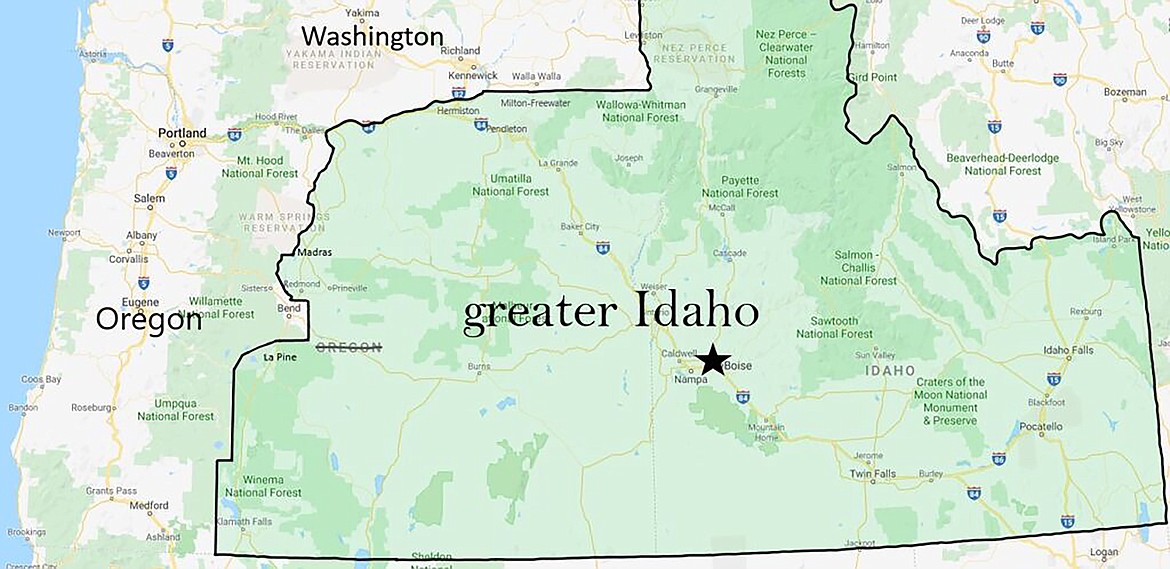The August 2023 issue of High Country News features a provocative article on the “Greater Idaho” secessionist movement written by freelance Oregon journalist Leah Sottile. Sottile compares the current attempt by some in eastern Oregon to move the Oregon-Idaho boundary westward with past, racially motivated secessionism across the Northwest.
The author looks back on our state’s experience in North Idaho with white supremacist Richard Butler and the Aryan Nations compound that envisioned a refuge for white people fleeing cities overrun with minority groups. Despite his death in 2004 and the demise of his Hayden Lake compound, Butler’s ideas have remained and evolved, as evidenced in Greater Idaho rhetoric.
Contemporary adherents akin to Butler continue to hold up the Northwest “redoubt” states of Idaho, Montana, Wyoming and parts of Oregon and Washington as strongholds protecting residents from urban, progressive politics. Sottile even cites the Idaho Freedom Foundation’s “Idaho True” webpage, which says, “Are you a refugee from California, or some other liberal playground? Did you move to Idaho to escape the craziness? Welcome to Idaho. We’re glad to have you here.”
When I visited the Greater Idahowebsite, I found fascinating tidbits about the advantages 380,000 people living in eastern Oregon counties would have in becoming red-state Idahoans. Also posted is a brochure encouraging Idahoans to vote for the boundary move.
Sottile notes how anti-democratic this Greater Idahomovement really is, on top of its extremist overtones. She interviewed eastern Oregonians who have not yet given up on their state and are working to find common ground with their urban counterparts in Salem. She notes that elected Republican lawmakers from eastern Oregon “are grumbling that Greater Idaho was actually siphoning authority away from them, making it hard to effectively govern.”
Pauline Braymen, an 85-year-old retired rancher in Harney County, called Greater Idaho ideological and impractical – a way of going back in time. “The urban/rural divide is an emotionally based state of mind that distorts reality,” she said. “The changes and steps forward in our quality of life in the 20th century, during my lifetime, were amazing. I just see all of that progress and vision being destroyed.”
There certainly was wisdom in John Wesley Powell’s original vision for the arid west: to draw governmental boundaries based on watersheds, or what he termed “drainage districts.” Powell presented a map to a U.S. Senate Committee in 1890 that supported his argument that America should move cautiously as it developed its lands and natural resources in the dry western region.
The Snake River watershed appears as a distinctive blue on Powell’s colorful map and had the Senate committee adopted his recommendations, today Idaho’s boundaries might extend east to include Jackson Hole, parts of Northern Nevada and the most eastern parts of Oregon and Washington. With the exclusion of the Clark’s Fork and Kootenai rivers, the North Idaho Panhandle would not exist, and Idaho would include both Grand Teton National Park and part of Yellowstone. Now that would have been a greater Idaho.
Janice Brown is a retired nonprofit executive and State Committeewoman for the Bonneville County Democrats.

